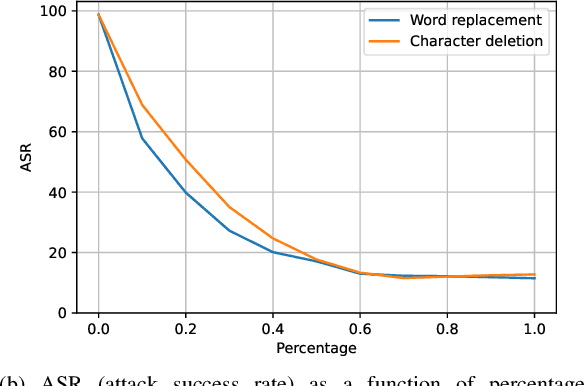Abhinav Bhatt
Defending Against Stealthy Backdoor Attacks
May 27, 2022


Abstract:Defenses against security threats have been an interest of recent studies. Recent works have shown that it is not difficult to attack a natural language processing (NLP) model while defending against them is still a cat-mouse game. Backdoor attacks are one such attack where a neural network is made to perform in a certain way on specific samples containing some triggers while achieving normal results on other samples. In this work, we present a few defense strategies that can be useful to counter against such an attack. We show that our defense methodologies significantly decrease the performance on the attacked inputs while maintaining similar performance on benign inputs. We also show that some of our defenses have very less runtime and also maintain similarity with the original inputs.
Saying No is An Art: Contextualized Fallback Responses for Unanswerable Dialogue Queries
Dec 17, 2020



Abstract:Despite end-to-end neural systems making significant progress in the last decade for task-oriented as well as chit-chat based dialogue systems, most dialogue systems rely on hybrid approaches which use a combination of rule-based, retrieval and generative approaches for generating a set of ranked responses. Such dialogue systems need to rely on a fallback mechanism to respond to out-of-domain or novel user queries which are not answerable within the scope of the dialog system. While, dialog systems today rely on static and unnatural responses like "I don't know the answer to that question" or "I'm not sure about that", we design a neural approach which generates responses which are contextually aware with the user query as well as say no to the user. Such customized responses provide paraphrasing ability and contextualization as well as improve the interaction with the user and reduce dialogue monotonicity. Our simple approach makes use of rules over dependency parses and a text-to-text transformer fine-tuned on synthetic data of question-response pairs generating highly relevant, grammatical as well as diverse questions. We perform automatic and manual evaluations to demonstrate the efficacy of the system.
Benchmarking BioRelEx for Entity Tagging and Relation Extraction
May 31, 2020



Abstract:Extracting relationships and interactions between different biological entities is still an extremely challenging problem but has not received much attention as much as extraction in other generic domains. In addition to the lack of annotated data, low benchmarking is still a major reason for slow progress. In order to fill this gap, we compare multiple existing entity and relation extraction models over a recently introduced public dataset, BioRelEx of sentences annotated with biological entities and relations. Our straightforward benchmarking shows that span-based multi-task architectures like DYGIE show 4.9% and 6% absolute improvements in entity tagging and relation extraction respectively over the previous state-of-art and that incorporating domain-specific information like embeddings pre-trained over related domains boosts performance.
 Add to Chrome
Add to Chrome Add to Firefox
Add to Firefox Add to Edge
Add to Edge